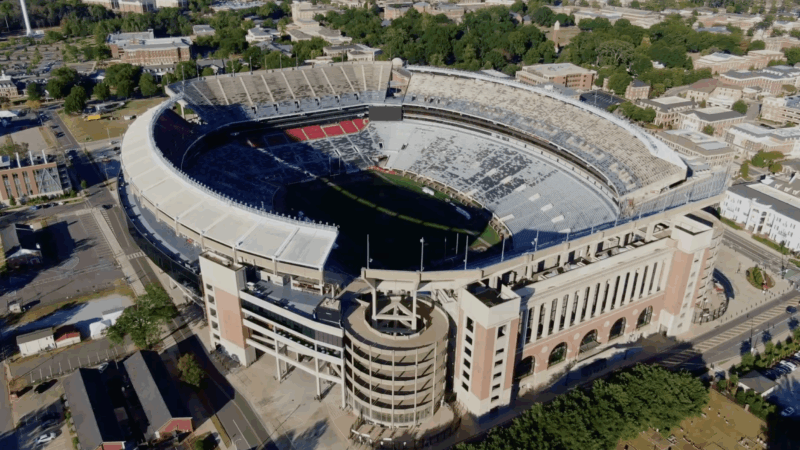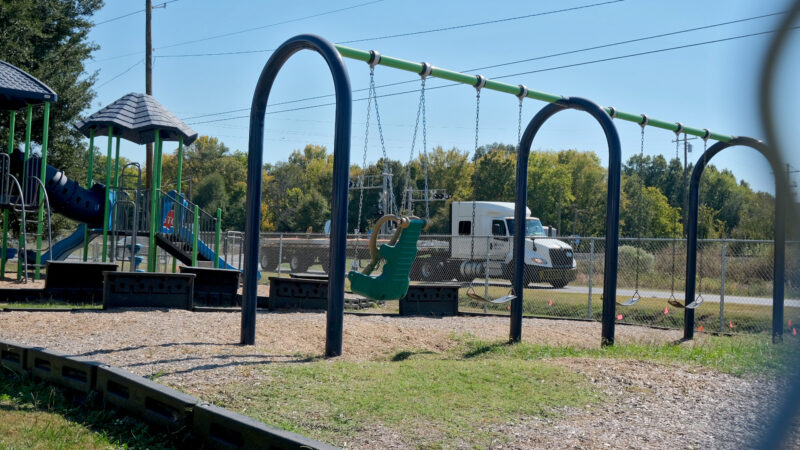Six-man football is more than touchdowns and wins in Texas: ‘It’s like an identity’
MARFA, Texas — From his view inside the press box at Martin Field, Jay Foster has seen generations of fans work their way into the stands to cheer on their Marfa Shorthorns. But the game he’s been announcing for the last decade isn’t your typical football game.
In Texas’ rural pockets, high schools like Marfa with fewer than 105 students can opt to play a small-town version of Friday night lights: six-man football.
While for many high school football in Texas means multimillion dollar stadiums, high-salaried coaching jobs and coveted five-star talent, the six-man game is more than touchdowns and championships – it’s about small community pride.
“It’s not like 11-man ball, but you still have the basics,” said Foster, who coached at Marfa High School. “You still got to block, tackle, you got to run, you got to pass, you got to kick and everything else you do normally in American-style football.”

This gridiron game some 200 teams play in Texas is distinct in a few ways: the field is shorter – just 80-yards long, instead of 100, and it’s a little narrower, too.
Field goals are worth four points, not three. And it takes a little more effort to get a first down – 15 yards rather than 10.
And there’s even a mercy rule: At any time after the half, if a team is ahead by 45 points or more, the game is over. It’s called “getting 45’d.”
And those rules make for a unique game.
“It’s like 11-man [but] on steroids,” said Bobbie Brown, who founded the website 1A Fan, a reference to the smallest school classification in Texas. “It’s so quick and fast and it’s so enjoyable, because there’s not one boring second in a six-man game.”

For Brown, the game of six-man football is part of the culture of small town Texas. “It’s like an identity,” she said.
“In small towns, there’s really not a whole lot to do,” said Brown, “But the school is the hub for the community. We know what we’re doing Friday nights in the fall.”
At a recent game, between crunching tackles and breathless sprints to the endzone, the school’s cheerleaders, and a mascot named “Bull-ette” lead the crowd in chants.
“You got people that disagree on all kinds of stuff, but they can agree on their team,” said Gregory Victor Meads, a preacher in the area, who’s watching the game from the stands. “It brings people together.”

The district’s interim superintendent, Arturo Alferez, says the generations of fans that fill the school’s stadium every Fall’s Friday night help to pass on school traditions – like the “shorthorn stampede,” the ringing of the bell after each touchdown and the singing of the school song after every game, win or lose.
“It just allows the opportunity for the community to come together and trade stories,” said Alferez, who’s watching the game with his grandson. “Even though Marfa has changed, the town has changed, you come back here and it brings you back to those traditions and roots.”
But in Marfa, the high school’s enrollment has been trending downward for years now, and some worry the student population may get so low that one day they won’t even be able to field a six-man team.
“I can’t even fathom that ever happening,” said Lori Flores, who attended the school, as did her parents and children too.
“We would all be heartbroken,” she said. “A lot would be lost.”

Just this year, a handful of schools in Texas’ gulf coast have skipped the football season because they didn’t have enough players.
On the field after a recent shorthorn win, Garry Webb embraces his family. The high school senior transferred from a neighboring district with only 28 students in pre-k through 12th grade.
But now, even in tiny Marfa, he says he’s found a community on the field and in the stands.
“From the stands, we see our parents, our cousins, our old teammates,” said Webb. “And what they see down here, is not just a number or a player, they see my little brother, my cousin, my old friend that I used to play with.”
For Webb, playing under Friday night lights just feels like a rite of passage in Texas, and one way or another – even if it’s the six-man version of the game – he had to experience it.
“It just feels like the world’s watching,” said Webb. “Not the entire world, but our world.”
Alabama Power seeks to delay rate hike for new gas plant amid outcry
The state’s largest utility has proposed delaying the rate increase from its purchase of a $622 million natural gas plant until 2028.
Former U.S. Sen. Doug Jones announces run for Alabama governor
Jones announced his campaign Monday afternoon, hours after filing campaign paperwork with the Secretary of State's Office. His gubernatorial bid could set up a rematch with U.S. Sen. Tommy Tuberville, the Republican who defeated Jones in 2020 and is now running for governor.
Scorching Saturdays: The rising heat threat inside football stadiums
Excessive heat and more frequent medical incidents in Southern college football stadiums could be a warning sign for universities across the country.
The Gulf States Newsroom is hiring an Audio Editor
The Gulf States Newsroom is hiring an Audio Editor to join our award-winning team covering important regional stories across Mississippi, Alabama and Louisiana.
Judge orders new Alabama Senate map after ruling found racial gerrymandering
U.S. District Judge Anna Manasco, appointed by President Donald Trump during his first term, issued the ruling Monday putting a new court-selected map in place for the 2026 and 2030 elections.
Construction on Meta’s largest data center brings 600% crash spike, chaos to rural Louisiana
An investigation from the Gulf States Newsroom found that trucks contracted to work at the Meta facility are causing delays and dangerous roads in Holly Ridge.








